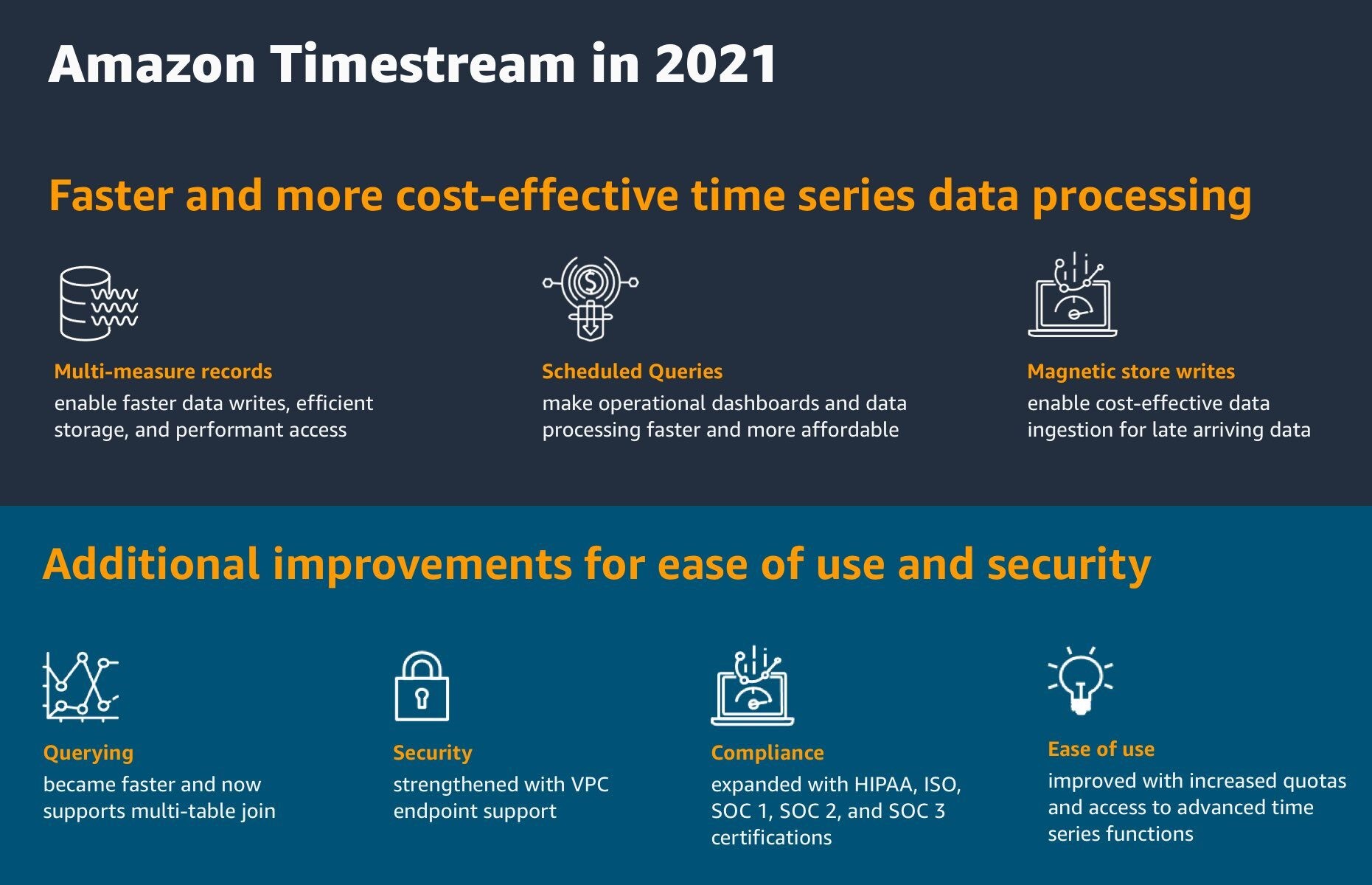AWS Database Blog
Restore an Amazon RDS for Oracle instance to a self-managed instance
Fully managed database services often bring lots of benefits to customers for running their database workload in the cloud, such as easy administration and high scalability, availability, and durability. Amazon Relational Database Service (Amazon RDS) for Oracle is a fully managed commercial database that makes it easy to set up, operate, and scale Oracle database […]
Develop a full stack serverless NFT application with Amazon Managed Blockchain – Part 2
This post builds upon the full-stack non-fungible token (NFT) development environment setup outlined in a previous post, which is considered a prerequisite to the topics we discuss in this post. Part 1 discussed how to set up a development environment; in this post we walk you through a complete NFT marketplace application using Amazon Managed […]
Measuring database performance of Amazon MemoryDB for Redis
Contributed by Jean Guyader, Sr. Software Engineering Manager and Kevin McGehee, Principal Software Engineer. Amazon MemoryDB for Redis is a Redis-compatible, durable, in-memory database service that delivers ultra-fast performance. It’s compatible with Redis, a popular open-source data store, which enables you to quickly build applications using the same flexible and friendly Redis data structures, APIs, […]
Store off-chain data using Amazon Managed Blockchain and Amazon S3: Part 1
Blockchain allows organizations to build applications where multiple parties can securely and transparently run transactions and share data without needing a trusted, central authority. Each member of the network has a copy of this transactional data. This is called on-chain data. Organizations often also want to store additional data along with the transactional data. For […]
Hidden dangers of duplicate key violations in PostgreSQL and how to avoid them
A common coding strategy is to have multiple application servers attempt to insert the same data into the same table at the same time and rely on the database unique constraint to prevent duplication. The “duplicate key violates unique constraint” error notifies the caller that a retry is needed. This seems like an intuitive approach, […]
Build microservices using Amazon Keyspaces and Amazon Elastic Container Service
In this post, we walk you through an example of how you can use Amazon Keyspaces (for Apache Cassandra) with Amazon Elastic Container Service (Amazon ECS) to modernize your existing Cassandra workloads. These services use open standards that allow customers to migrate their existing workloads to take advantage of these services’ fully managed capabilities and […]
Auditing for highly regulated industries using Amazon Aurora PostgreSQL
Financial services industry (FSI) customers and other highly regulated industries often need to audit every action made by each database user and administrator as well as identify each person logged in to their databases, usually using their identity provider (IdP). In such cases, the IdP is considered the source of truth for mapping users against […]
Automate PostgreSQL log exports to Amazon S3 using extensions
Do you want to copy or archive your Amazon Relational Database Service (Amazon RDS) for PostgreSQL or Amazon Aurora PostgreSQL-Compatible Edition logs directly to Amazon Simple Storage Service (Amazon S3)? Does your organization have the regulatory requirements to audit all the DDL or DML activity against your RDS for PostgreSQL database? With the addition of […]
Migrate from Amazon RDS for Oracle to Aurora PostgreSQL or Amazon RDS for PostgreSQL using this self-service guide
Today, we’re introducing the Amazon Database Migration Accelerator (DMA) Connect program which is designed to help you migrate from Amazon Relational Database Service (Amazon RDS) for Oracle to Amazon Aurora PostgreSQL-Compatible Edition or Amazon RDS for PostgreSQL. Migration to Amazon RDS for Oracle is a common first step for many customers making their foray into […]
Amazon Timestream: 2021 in review
Amazon Timestream is a purpose-built time series database service you can use for IoT data collection, application health and usage monitoring, real-time analytics, and network performance monitoring. Timestream is fast, scalable, and serverless, making it easy and cost-effective to store and analyze trillions of events per day. Since its general availability in 2020, Timestream has […]









